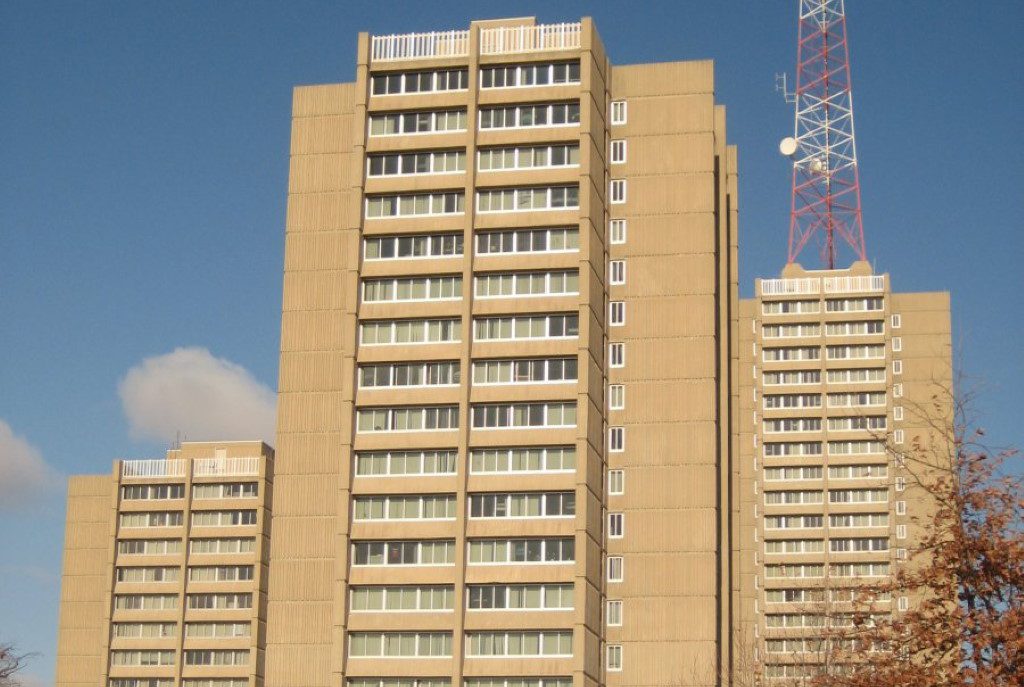Pandemic Compounds Student Debt Crisis
64% of Wisconsin’s 2018 graduates had debt, averaging $31,705 per person.
The student debt crisis isn’t new.
The Institute for College Access and Success (TICAS) found that 64% of Wisconsin’s 2018 graduates had student debt, averaging $31,705 of debt per person.
Compared to the rest of the country, Wisconsin has the seventh most graduates with debt and the 13th highest average amount of debt.
The crisis isn’t new, but it’s been compounded by a pandemic.
“Student loan debt, even in the pre-pandemic times, was a significant drag on the finances of individuals and families and the state and national economy,” says Mike Browne, deputy director of One Wisconsin Now, a liberal policy group. “We’ve seen from numerous studies about how student loan debt impacted everything from discretionary spending to major commercial purchases like new vehicles or homes. It was a significant drag before, and is going to be a significant drag on efforts to recover from what is looking like, at best, a recession caused by the pandemic.”
Short-term relief
The CARES Act provided some relief, putting a forbearance on most federal loan payments and halting interest accumulation until Sept. 30. However, borrowers with certain types of federal loans or debt, held by private companies, weren’t covered in the relief package.
A survey of 1,000 Americans with student debt, done by LendEdu (a website that compares financial products such as loans) found that even with the federal grace period stopping loan payments people were forced to make difficult decisions — especially those who have been laid off or furloughed in the wake of the pandemic.
A large majority — 68% — of federal borrowers said they were unsure they could have made the next payment before the CARES Act was passed. Around 41% of borrowers said they’d continue paying during the grace period, while 43% said they wouldn’t make payments.
The CARES Act was an important first step that provided much needed short-term relief, according to Michelle Streeter, a policy analyst at TICAS. But, she says, more needs to be done before millions of borrowers hit that hard reset date of Oct. 1.
“[For] existing borrowers, the payment pause and interest waiver and the benefits in the CARES Act were really important and implemented relatively quickly,” Streeter says. “There are some flaws there. I don’t think the Sept. 30 end date is long enough. It solves the immediate problem of making monthly payments right now, but it doesn’t solve the longterm problem. I’m extremely concerned about what’s going to happen on Oct. 1 of this year.”
Extending the grace period and tying its conclusion to economic indicators, rather than a calendar date, were solutions Streeter says could help borrowers be prepared to start making payments again.
‘Tightening my belt’
Savion Castro, Madison School Board member, graduated from UW-Madison in 2018 and has four student loans to make payments on. Only one of those loans is in the federal grace period and he’s had hours cut at his teaching job at UW-Madison.
He says he’s still making payments, but projecting out a few months, his savings will only go so far.
“Like a lot of people, I’m tightening my belt, too,” Castro says. “The bills are eating more and more into my monthly income. It’s crazy because calculating how much I have saved up for rent and all these bills, it’s not a crazy long amount of time.”
For first generation college students and students of color who were already in precarious economic situations caused by large amounts of debt, the pandemic has only made matters worse, Castro says.
“It’s exacerbating already fragile conditions,” he says. “When you look at the disproportionality of student loan debt impacting students of color and what kind of success they have in the labor market … There was already a crisis occurring in these communities with significant student loan payments. When a crisis like this happens and people need that reserve money to do the bare minimum, the system has to maintain people’s livelihoods.”
He added that COVID-19 has caused public health officials to issue guidance that affects people’s jobs and in the meantime, those people need to be provided with help or there could be costly ramifications for future generations.
“I’m looking at, how can the system support people in a public health crisis, how can it support people to abide by the social distancing that our public health experts say we should be doing?” Castro asks. “If our system can’t support that, it’s an issue for their livelihoods. For their work and education, and their children’s work and education.”
A way out?
With people out of work, they’re having to make decisions between what bills to pay each month.
“With people losing work and making a decision between paying for medicine or paying for rent or making that student loan debt payment,” Castro says, “People’s bank accounts are getting really low and they’re having to make those decisions.”
For state Treasurer Sarah Godlewski, this is an unsustainable choice for Wisconsinites.
“Quite frankly, I think we need to do everything we can to keep Wisconsinites financially afloat,” Godlewski says. “Nobody should choose between paying student loan debt and paying to put food on their family’s table. That’s completely unreasonable.”
While Godlewski agreed the CARES Act provided some short-term relief, there’s more to be done. She says something needs to be done at the state level.
“What can the state do to address student loans here in Wisconsin?” Godlewski asks. “It impacts almost a million Wisconsinites. When you add up all the student loan debt in Wisconsin it’s over $20 billion. When you add the additional financial crisis on top of it, how can we be providing tools to help people navigate this successfully? I don’t think people want a handout but they don’t want to be handcuffed.”
Kathy Blumenfeld, secretary of Wisconsin’s Department of Financial Institutions, says other states have enacted policies that could help in Wisconsin.
She also suggested policies such as public service loan forgiveness.
But barring federal action or any change in the current political environment in Madison, many Wisconsinites will need to start making payments again in the fall — whether or not they’re ready to do so.
For borrowers who are staring down the Oct. 1 start date, Blumenfeld says they should become more familiar with their loan servicer and set up an income-driven repayment plan.
“If you’re not in an income-driven repayment plan, this is a great time to do that,” she says. “If the floodgates open Sept. 30 and you don’t have a job, your payment will be commensurate with what your income is.”
But, even that route has potential obstacles, Streeter says. Borrowers still struggling or those who are out of work, will still be forced to re-engage with their loan payments.
Much like what happened with unemployment insurance systems around the country, the student loan apparatus will be flooded with millions of requests for payment plans — a bureaucratic system not equipped to handle such a large rush.
“I think overall, all of the problems that existed before the coronavirus are going to be exacerbated by a massive influx on one day of millions of people re-entering the system in a bad economic situation,” Streeter says.
Reprinted with permission of Wisconsin Examiner.
More about the Coronavirus Pandemic
- Governors Tony Evers, JB Pritzker, Tim Walz, and Gretchen Whitmer Issue a Joint Statement Concerning Reports that Donald Trump Gave Russian Dictator Putin American COVID-19 Supplies - Gov. Tony Evers - Oct 11th, 2024
- MHD Release: Milwaukee Health Department Launches COVID-19 Wastewater Testing Dashboard - City of Milwaukee Health Department - Jan 23rd, 2024
- Milwaukee County Announces New Policies Related to COVID-19 Pandemic - County Executive David Crowley - May 9th, 2023
- DHS Details End of Emergency COVID-19 Response - Wisconsin Department of Health Services - Apr 26th, 2023
- Milwaukee Health Department Announces Upcoming Changes to COVID-19 Services - City of Milwaukee Health Department - Mar 17th, 2023
- Fitzgerald Applauds Passage of COVID-19 Origin Act - U.S. Rep. Scott Fitzgerald - Mar 10th, 2023
- DHS Expands Free COVID-19 Testing Program - Wisconsin Department of Health Services - Feb 10th, 2023
- MKE County: COVID-19 Hospitalizations Rising - Graham Kilmer - Jan 16th, 2023
- Not Enough Getting Bivalent Booster Shots, State Health Officials Warn - Gaby Vinick - Dec 26th, 2022
- Nearly All Wisconsinites Age 6 Months and Older Now Eligible for Updated COVID-19 Vaccine - Wisconsin Department of Health Services - Dec 15th, 2022
Read more about Coronavirus Pandemic here





















